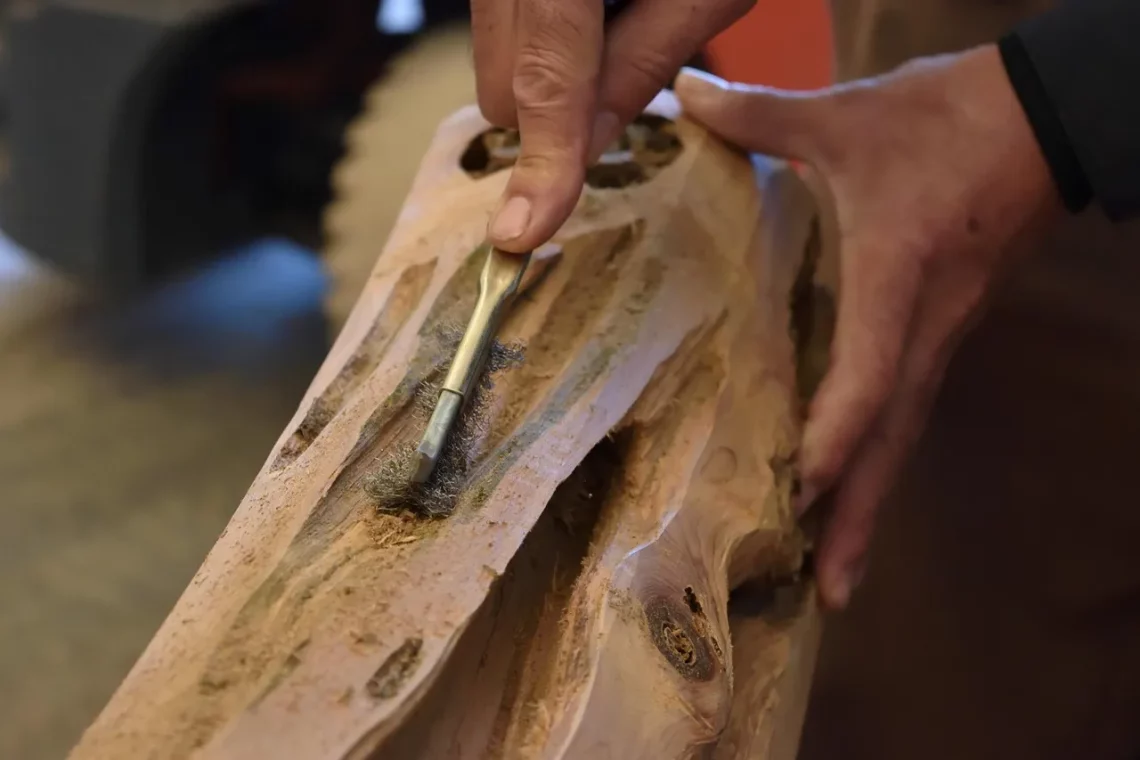
The Timeless Beauty and Craftsmanship of Balinese Wood Art
The enchanting allure of Balinese wood art has captivated hearts and minds across the globe. Nestled in the lush landscapes of Indonesia, Bali is not just a tropical paradise; it is also a rich cultural tapestry where traditional craftsmanship flourishes. The island is renowned for its intricate wood carvings, which reflect a deep connection to spirituality, nature, and the vibrant local culture. Artisans dedicate their lives to mastering the techniques passed down through generations, creating pieces that tell stories, preserve history, and celebrate the beauty of the natural world.
The wood used in Balinese art is sourced from sustainable materials, ensuring that the environment is respected and preserved. The craftsmanship involved in creating these wooden masterpieces goes beyond mere aesthetics; it is a form of meditation and a spiritual practice for many artisans. The intricate designs and vibrant finishes bring life to the wood, transforming it into something that transcends mere functionality. Each piece is unique, bearing the mark of the artisan’s hand and the soul of Bali itself.
As you delve deeper into the world of Balinese wood art, you will discover not only the beauty of the pieces but also the profound cultural significance they hold. This art form serves as a reflection of the island’s heritage, making it an essential aspect of Balinese identity and a testament to the enduring nature of traditional craftsmanship.
The Techniques Behind Balinese Wood Carving
Balinese wood carving is a meticulous art form that showcases a variety of techniques, each contributing to the final product’s beauty and intricacy. Artisans begin by selecting high-quality wood, such as teak, mahogany, or ebony, known for their durability and rich textures. The choice of wood is crucial, as it influences both the carving process and the piece’s longevity.
Once the wood is chosen, artisans sketch designs that often draw inspiration from nature, mythology, and daily life in Bali. These designs are then transferred onto the wood, serving as a guide for the carving process. Using traditional hand tools, such as chisels and knives, artisans carefully carve out the intricate details, a process that requires immense skill, patience, and precision.
The carving process can take days, weeks, or even months, depending on the complexity of the piece. Every cut and curve is deliberate, reflecting the artisan’s deep respect for the material and their commitment to preserving the art form. Once the carving is complete, the piece undergoes a finishing process, where it is sanded and polished to enhance the natural grain of the wood. Some artisans may apply natural oils or stains to bring out the wood’s rich colors and textures, adding an extra layer of depth to the final product.
In recent years, there has been a resurgence of interest in traditional Balinese wood carving techniques, as artisans strive to keep their cultural heritage alive. Workshops and training programs are being established to educate new generations about these skills, ensuring that the art form continues to thrive. This dedication to craftsmanship not only preserves the aesthetic beauty of Balinese wood art but also fosters a sense of community among artisans, as they share their knowledge and passion for their craft.
The Cultural Significance of Wood Art in Bali
In Bali, wood art is more than just a decorative element; it is a vital part of the island’s cultural identity. Each carved piece often serves a specific purpose, whether it be religious, ceremonial, or functional. Many wood carvings are created for temples, homes, and public spaces, embodying spiritual beliefs and cultural narratives that have been passed down through generations.
The themes depicted in Balinese wood art are deeply rooted in the island’s Hindu beliefs and local customs. Common motifs include deities, animals, and scenes from traditional Balinese life. These carvings are not only visually stunning but also serve to educate the community and visitors about the island’s rich history and spiritual practices. For many Balinese, possessing or displaying wood art is a way of connecting with their ancestors and honoring their heritage.
Moreover, wood art plays a significant role in various cultural ceremonies and festivals throughout the year. Carvings are often used in rituals to invite blessings and prosperity, with artisans creating pieces specifically for these occasions. The presence of wood art in these settings enhances the spiritual atmosphere, reinforcing the connection between the physical and metaphysical worlds.
The importance of Balinese wood art extends beyond its aesthetic appeal; it is also a source of livelihood for many artisans and their families. The sale of wood carvings supports local economies and helps sustain traditional craftsmanship. In recent years, the rise of eco-tourism has further spotlighted Balinese wood art, as visitors seek authentic, handmade products during their travels. This interest not only provides economic benefits but also encourages the preservation of traditional skills and techniques.
The Global Influence of Balinese Wood Art
As the world becomes increasingly interconnected, the influence of Balinese wood art has reached far beyond the shores of Indonesia. The intricate designs and exquisite craftsmanship have captured the attention of art enthusiasts and collectors around the globe. From contemporary interior design to international art exhibitions, Balinese wood art is celebrated for its unique aesthetic and cultural significance.
In many Western countries, Balinese wood carvings have become popular decorative items, often used to add an exotic touch to homes and businesses. The rich textures and vibrant colors of the wood bring warmth and character to any space. Interior designers frequently incorporate these pieces into their projects, recognizing the ability of Balinese wood art to create a sense of tranquility and connection to nature.
Moreover, the global appreciation for Balinese craftsmanship has spurred collaborations between local artisans and international designers. These partnerships often result in innovative designs that blend traditional techniques with modern aesthetics, appealing to a broader audience. This fusion of styles not only helps to keep the art form relevant but also introduces new markets for Balinese artisans.
Social media platforms have also played a significant role in promoting Balinese wood art worldwide. Artists and galleries showcase their work online, reaching potential buyers and art lovers who may not have the opportunity to visit Bali in person. This digital presence allows for greater visibility and appreciation of the craftsmanship involved in creating these stunning pieces, fostering a sense of community among collectors and enthusiasts.
However, as the demand for Balinese wood art increases, it is essential to ensure that the artisans are fairly compensated for their work. Ethical sourcing and sustainable practices must remain a priority to protect both the environment and the cultural heritage of Bali. By supporting local artisans and choosing authentic, handmade pieces, buyers can contribute to the preservation of this timeless art form while enjoying its beauty in their own lives.
Preserving the Art of Balinese Wood Carving
The future of Balinese wood art hinges on the balance between tradition and modernity. As globalization continues to influence cultural practices, it is crucial to preserve the traditional techniques and values that define Balinese craftsmanship. Community initiatives, workshops, and training programs are vital in passing down skills to the next generation of artisans, ensuring that the art form remains vibrant and relevant.
Efforts to promote sustainable practices in wood sourcing and production are also essential. Many artisans are adopting eco-friendly methods, utilizing reclaimed wood and non-toxic finishes to minimize their environmental impact. This commitment to sustainability not only helps protect the beautiful landscapes of Bali but also resonates with environmentally conscious consumers worldwide.
Furthermore, fostering a sense of pride in Balinese culture among younger generations is critical. By emphasizing the importance of their heritage and the stories behind each piece of wood art, artisans can instill a sense of responsibility in the youth to continue these traditions. Collaborations with local schools and cultural organizations can encourage interest in the craft, providing opportunities for students to learn about their cultural roots while developing practical skills.
In conclusion, the timeless beauty and craftsmanship of Balinese wood art are a testament to the island’s rich cultural heritage. Through dedication, skill, and a deep connection to their traditions, Balinese artisans create pieces that resonate with both local and global audiences. By supporting these artists and promoting sustainable practices, we can ensure that this exquisite art form continues to thrive for generations to come.




